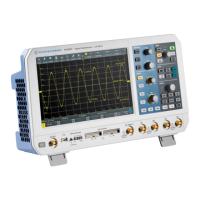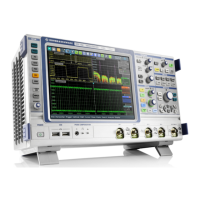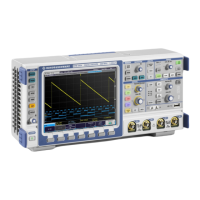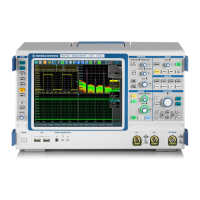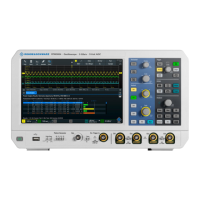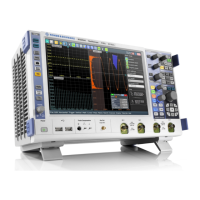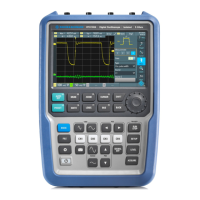Fernsteuerbefehle
R&S
®
RTB2000
463Bedienhandbuch 1333.1611.03 ─ 05
Parameter:
<Identifier> String containing binary pattern. Characters 0, 1, and X are allo-
wed. Enter the 6 bit identifier without parity bits, not the protec-
ted identifier.
TRIGger:A:LIN:DATA <Data>
Defines the data pattern. The number of bytes in the data pattern is defined with
TRIGger:A:LIN:DLENgth.
The command is relevant if TRIGger:A:LIN:TYPE is set to IDDT.
Parameter:
<Data> String containing binary pattern with max. 64 bit. Characters 0,
1, and X are allowed. Make sure to enter complete bytes.
TRIGger:A:LIN:DCONdition
<DataCondition>
Sets the comparison condition for data: If the pattern contains at least one X (don't
care), you can trigger on values equal or not equal to the specified value. If the pattern
contains only 0 and 1, you can also trigger on a range greater than or lower than the
specified value.
The command is relevant if TRIGger:A:LIN:TYPE is set to IDDT.
Parameter:
<DataCondition> EQUal | NEQual | GTHan | LTHan
*RST: EQ
TRIGger:A:LIN:DLENgth <DataLength>
Defines the length of the data pattern - the number of bytes in the pattern.
The command is relevant if TRIGger:A:LIN:TYPE is set to IDDT.
Parameter:
<DataLength> Bereich: 1 bis 8
Inkrement: 1
*RST: 1
Std.-einheit: Byte
15.11.6.3 LIN-Decodierungsergebnisse
In allen BUS<b>:LIN...-Befehlen gibt das Suffix <b> den Bus an.
BUS<b>:LIN:FCOunt?....................................................................................................464
BUS<b>:LIN:FRAMe<n>:DATA?......................................................................................464
BUS<b>:LIN:FRAMe<n>:STATus?...................................................................................464
BUS<b>:LIN:FRAMe<n>:STARt?.....................................................................................465
BUS<b>:LIN:FRAMe<n>:STOP?..................................................................................... 465
BUS<b>:LIN:FRAMe<n>:CSSTate?................................................................................. 465
Analyse serieller Busse
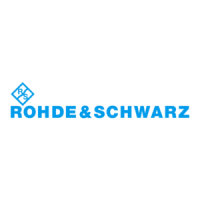
